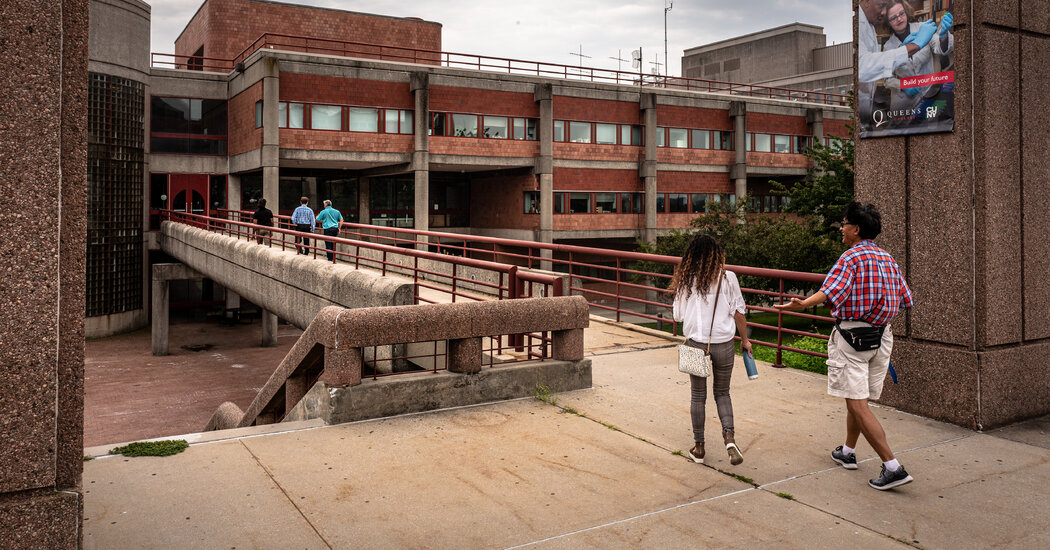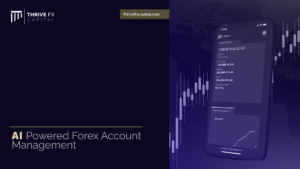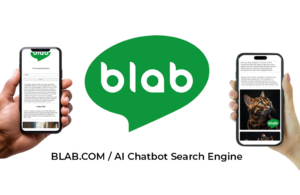

President Biden announced on Wednesday that the federal government would cancel up to $20,000 worth of federal student loans for millions of people. But not everyone with debt will qualify.
The action includes rules that will maintain the balances of debtors who currently have high incomes. Those who do qualify will need to navigate the balky federal loan servicing system and keep a close eye on their accounts and credit reports for any mistakes.
It also extends the pause on monthly student loan payments, which means that borrowers won’t have to resume payments until at least January, and provides details on a new proposal to create a more affordable income-driven repayment plan.
What follows are questions you may have about the cancellation program with answers that have come from the White House, the Department of Education and student loan servicers.
We will update this article in the coming days and weeks as more details become available.
Who qualifies for loan cancellation?
Individuals who are single and earn under $125,000 will qualify for the $10,000 in debt cancellation. If you’re married and file your taxes jointly or are a head of household, you qualify if your income is under $250,000.
Eligibility will be based on your adjusted gross income. Income figures from either 2020 or 2021 can render you eligible, but 2022 income will not.
If you received a Pell Grant and meet these income requirements, you could qualify for an extra $10,000 in cancellation.
Only loans disbursed by June 30 of this year are eligible for relief.
I have only graduate school debt, but I got a Pell Grant when I was an undergraduate. Am I eligible for the extra $10,000?
Yes.
I had a Pell Grant for only one year. Am I eligible for the extra $10,000?
Yes.
I qualified for only a partial Pell Grant. Am I eligible for the extra $10,000?
Yes.
How will the powers that be know if I got a Pell Grant?
They have their ways, using their own administrative data. They’re also working on improving online accounts to make your Pell history clearer. But if you have easy access to your Pell Grant records, it can’t hurt to put them someplace safe; now is definitely not the moment to delete or shred them.
Which types of debt qualify?
Only federal student loan debt is eligible. Private loans are not eligible.
Are my F.F.E.L. loans eligible for forgiveness?
Probably, or at least eventually. If your F.F.E.L. loans, or Federal Family Education Loans, were eligible for the payment pause that began in 2020, they are already eligible for this new cancellation offering. If they were not eligible for the pause, then they’re not eligible for cancellation right now.
But you will likely be able to make them eligible in one of two ways. First, you can consolidate them into a federal direct loan. At that point, they will be eligible. You can still consolidate now; the June 30 deadline we mentioned above does not apply here.
Then, there’s the second way. The Department of Education is working with the outside entities that oversee the cancellation-ineligible F.F.E.L. loans, with the intention of making cancellation available for the borrowers who have those loans. The department encourages people who may not want to consolidate to “sit tight” and await word on this effort.
I was a student this year. Do I qualify?
Yes. But if you were a dependent during the 2021-22 school year (and it’s the Department of Education’s definition of the term “dependent” that governs here, not the definition for federal tax purposes), eligibility depends on parental income, not your own.
If your status changed in the middle of this year — say, because you graduated — the department has administrative data for many people that will allow it to recognize the change. If it doesn’t have that data, there will be a process by which you can prove your change in status.
Are parent loans eligible?
Yes. The federal parent PLUS loans are eligible.
Are graduate student loans eligible?
Yes. PLUS loans are also available for graduate students, and these, too, are eligible.
I didn’t finish my degree. Does that disqualify me?
No.
What’s the first thing I need to do if I qualify?
Start by making sure that your loan servicer knows how to find you, so that you’ll be able to receive any guidance it provides and follow any instructions that it issues. Check that your postal address, your email address and your mobile phone number are listed accurately.
If you don’t know who your servicer is, consult the Department of Education’s “Who is my loan servicer?” web page for instructions.
What to Know About Student Loan Debt Relief
What to Know About Student Loan Debt Relief
Many will benefit. President Biden’s executive order means the federal student loan balances of millions of people could fall by as much as $20,000. Here are answers to some common questions about how it will work:
How do I apply for student loan forgiveness? Or does it happen automatically?
It depends. If you’re already enrolled in some kind of income-driven repayment plan and have submitted your most recent tax return to certify that income, your loan servicer and the Education Department know how much you earn and you should not need to do anything else. Still, keep an eye out for guidance from your servicer. Close to eight million borrowers “may” be eligible to get this automatic relief, according to the department.
For everyone else, the department intends to have a “simple” application available by early October. You can sign up to receive an alert when it’s ready. It’s fine to apply even if you think the department has your latest tax information.
The department will stop taking applications on Dec. 31, 2023.
When will loan forgiveness start?
Once you apply, it should be no more than six weeks until your balance falls by whatever amount you’re eligible for.
A tip: The payment pause that has been in effect since 2020 is supposed to expire at the end of this year. So you should have an application in by early November to get your relief before the bills start coming again.
How can I be sure that the cancellation has really happened?
Watch for messages from your loan servicer and be wary. Given how many millions of people are involved and that billions of dollars are at stake, there are bound to be hiccups. If you get a message that you suddenly have a zero balance or that your balance has fallen by $10,000 or $20,000, take a screen shot and print it out in case it somehow changes later.
And if your debt does go to zero, keep an eye on your credit report in the months afterward to make sure that your loan servicer is reporting that fact correctly. For instance, there should not be any notices of late payments that post after your balance shows as zero.
Will I have to pay federal taxes on the canceled debt?
No. Discharged debt is usually taxable as income, but a temporary tax rule created an exception: Student loan debt forgiven from 2021 through 2025 doesn’t count toward federal taxable income.
Will I owe state taxes on erased debt?
Possibly, but that depends on where you live.
Some states will track the temporary federal rule that exempts canceled student debt from federal income taxes. But it appears that at least 13 states have the potential to make erased student debt subject to state income taxes, according to the Tax Foundation, an independent nonprofit tax policy organization. The final count could be smaller, however, if states make legislative, administrative or other changes, the group said.
The maximum potential tax bill — for a typical borrower with $10,000 in canceled debt — would vary by state, ranging from $300 to roughly $1,100, a Tax Foundation analysis found.
My debt exceeds the amount I am eligible to have canceled, and my loans have been on pause since that relief began in March 2020. Will payments start again on my remaining balance?
Not until at least January.
You should receive a billing notice at least three weeks before your first payment is due, but you can contact your loan servicer before then (online is more efficient) for specifics on what you owe and when payment is due.
I have more than $10,000 in debt. When and how will my monthly payment amount be adjusted?
Payments will be recalculated. Specifics haven’t been released yet, but we can make an educated guess based on what’s possible now.
When borrowers pay a solid chunk of debt and their balance declines, they can ask their servicer to recalculate their payments over the remaining loan term, resulting in a lower monthly payment, according to Scott Buchanan, executive director of Student Loan Servicing Alliance, an industry trade group. But if the $10,000 in forgiveness doesn’t put a dent into a borrower’s balance, servicers may not even be instructed to recalculate payments, which may remain the same.
Mr. Buchanan said the servicers hadn’t yet received any guidance on when or how payments should be recalculated.
Borrowers already enrolled in income-driven plans, however, generally won’t see their payments change — even if a portion of their debt is canceled. That’s because they make payments based on their discretionary income and household size.
Moving to a new plan may result in a lower payment: Mr. Biden has proposed a rule to create a plan that would cap those payments at 5 percent of discretionary income, down from 10 percent to 15 percent in most existing plans.
What is discretionary income, anyway?
Discretionary income is usually understood as the income left over after paying for basic needs like food and rent. In the land of federal student loans, this is the portion of your income that income-driven repayment plan formulas take into account when calculating your monthly payment.
More technically speaking, discretionary income is usually defined (in most existing I.D.R. plans) as the amount earned above 150 percent of the poverty level, which is adjusted for household size.
For a single person, the federal poverty level is $13,590 in most states, so single borrowers in most income-driven plans would pay 10 percent of what they earned above $20,385. If you’re a single earner with an annual income of $50,000, your discretionary income would be $29,615.
President Biden’s proposal for a new income-driven repayment plan shields more income from the payment formula and reduces the percentage of income paid by undergrad borrowers.
What if I want to keep paying the same amount and have it applied to the principal?
Send in the extra money with your on-time payment each month.
Let’s say your payment drops to $200 a month after forgiveness, but you had been paying $300. If you want to continue paying $300, the first $200 will be applied to the payment that’s due and the extra $100 should immediately be applied to principal (and not the next payment). “Every extra dollar you send above your payment amount goes to principal,” said Mr. Buchanan of the trade group.
But if there’s any accrued interest — say, because the previous payment was late — the extra money will apply to that first.
Given the loan servicers’ propensity to muck things up, be sure to log into your account to be sure the extra money is being applied to principal and not the next month’s statement.
What if I still can’t afford to pay my loans? What are my options?
There are several repayment options to consider, each with different eligibility rules, conditions and tedious details. In many cases, struggling borrowers will probably want to opt for an income-driven repayment plan, where the payment amount is tied to your income and can be as low as $0. After you make payments for a set period of years, whatever balance remains is forgiven by the federal government.
Other repayment plans may better suit your circumstances, and they can sometimes yield lower payment amounts. Those include the standard (with fixed payments), graduated (your payments rise) and extended (you pay over a longer time) repayment plans.
Options that pause payments altogether should generally be used only as a last resort: Requesting a deferment or forbearance will temporarily put payments on hold, but there can be significant added costs in the long run.
With forbearance, payments stop but interest still accrues. If the interest is not paid, it’s added to the loan’s principal balance. Deferment is similar, but subsidized loans — which generally have slightly better terms — won’t accrue interest while they’re paused.
Could you remind me how income-driven repayment, or I.D.R., works?
There’s a confusing assortment of plans available, and now there’s a new one coming. President Biden is proposing a rule to create a new plan that will substantially reduce future monthly payments for lower- and middle-income borrowers.
More on Student Loan Debt Relief
For now, the alphabet soup includes PAYE, REPAYE, I.C.R., and I.B.R. (which comes in two versions; the latest has slightly better terms for newer borrowers).
The rules are complicated, but the gist is simple: Payments are calculated based on your earnings and readjusted each year.
After monthly payments are made for a set number of years — usually 20 — any remaining balance is forgiven. (The balance is taxable as income, though a temporary tax rule exempts balances forgiven through 2025 from federal income taxes.)
Monthly payments are often calculated as 10 or 15 percent of discretionary income, but one plan is 20 percent. Discretionary income is usually defined as the amount earned above 150 percent of the poverty level, which is adjusted for household size. PAYE usually has the lowest payment, followed by either I.B.R. or REPAYE, depending on the specific circumstances of the borrower, said Mark Kantrowitz, a student aid expert. The new plan will change that calculus (more on that below).
There’s a dizzying variety of rules, and the existing plans aren’t a cure-all. Even though some borrowers may be eligible for a $0 payment, the plans aren’t always affordable for everyone. The formulas aren’t adjusted for local cost of living, private student loans or medical bills, among other things.
How will the new plan work?
The proposed I.D.R. plan would reduce payments on undergraduate loans to 5 percent of discretionary income, down from 10 percent to 15 percent in many existing plans. Graduate debt is also eligible, but borrowers would pay 10 percent of discretionary income on that portion. If you hold both undergraduate and graduate debt, your payment will be weighted accordingly.
Borrowers with original loan balances of less than $12,000 would make monthly payments for 10 years before cancellation, instead of the more typical 20-year repayment period. It appears everyone else would pay up to 20 years (similar to existing plans) though more details weren’t immediately available.
The new plan would also allow more low-income workers to qualify for zero-dollar payments thanks to a tweak in the payment formula, which would benefit all borrowers enrolled: The administration plans to increase the amount of income deemed necessary for basic expenses, which means it’s shielded from the calculation. As a result, no borrower earning under 225 percent of the poverty level — or what a $15 minimum wage worker earns annually — will have to make a payment, the administration said.
There’s more: Unlike other existing income-driven plans, borrowers’ loan balances will not grow as long as they make their monthly payments, even when they are not required to make any payments because their income is too low.
That will provide a much-needed dose of mental relief to borrowers who diligently make payments yet still see their balances balloon over the decades because they’re not paying enough to cover the interest.
When can I sign up?
Those details haven’t been released yet. The administration has the authority to create new plans on its own, but it will still need to clear some procedural hurdles. Then, the loan servicers will have to get their systems ready.
Where can I get help choosing the best repayment plan?
Analyzing the plans can be excruciating, but there are tools and services that can help. The loan simulator tool at StudentAid.gov will guide you through the options and help you decide which plan best fits your goals — finding the lowest-payment plan, for example, versus paying loans off as soon as possible.
It’s easy to use. When you sign in, it should automatically use your loans in its calculations. (You can manually add other federal loans if any are missing.) You can also compare plans side by side — how much they’ll cost over time, both monthly and in total, and if any debt would be forgiven.
Besides your servicer, groups like the Institute of Student Loan Advisors, known as TISLA, can provide free guidance on what options may work best for you. For New York State residents, EDCAP, a nonprofit focused on student loans, also offers help. And some employers and other organizations have hired companies like Summer, which helps borrowers sort through the options.
Do I qualify for forgiveness if my loans were in default?
Yes. All defaulted borrowers who benefited from the payment freeze are eligible for relief. That includes those holding federal direct loans; Federal Family Education Loans, both privately held and government owned; and Perkins loans held by the government.
My debt exceeds $10,000 and my loans were in default. What does this mean for me?
You’ll get a fresh start: Your loans are now deemed current, which means you can enroll into a repayment plan without having to jump through the extra hurdles usually required.
If you still cannot afford to make payments, call your servicer, who can assist with enrolling you into a more affordable repayment program, including income-driven repayment. If a defaulted borrower takes no action, it will simply buy them more time before they fall into default again, after roughly nine months of nonpayment.
It often takes a year or more for an account to move into collections. At that point, the federal government can take your tax refund, up to 15 percent of your paycheck or part of your Social Security benefits.
This new status also means defaulted borrowers are no longer cut off from receiving federal student aid, including Pell grants.
Has anything else changed with other forms of debt cancellation, like the existing income-driven repayment programs?
Yes. In April, the Education Department said it would make fixes to address past inaccuracies that would help borrowers enrolled in I.D.R. plans, including a one-time revision that would make more payments count toward loan forgiveness. That includes:
-
Any months in which borrowers made payments will count toward I.D.R., regardless of the repayment plan.
-
All payments made on loans that were later consolidated will count.
-
Months spent in deferment before 2013 (with the exception of in-school deferment) will count.
-
Forbearances of more than 12 consecutive months and 36 cumulative months will also count toward forgiveness, under both I.D.R. and P.S.L.F.
In 2023, the government will begin displaying payment counts on StudentAid.gov so borrowers can view their progress in their own accounts.
How does this overlap with the recent changes to eligibility for public service loan forgiveness?
The cancellation should happen independently of any process that you’re already going through to get partial or complete cancellation via P.S.L.F.
There is currently a limited-time waiver for public servants that will allow a number of people to get credit toward loan cancellation for past payments that would not have otherwise qualified. You can learn more about it by consulting the “P.S.L.F. Waiver” page on the Department of Education’s website.
The deadline for applying for the waiver is Oct. 31, though legislators are pushing for an extension.
Is there any chance that a lawsuit reverses the action?
A small one, but it’s difficult to say how small. It is not clear who would have the standing to bring a lawsuit, though there may be attempts anyhow.
Any elected official who sued would run the risk of infuriating constituents by adding five figures back onto their loan balances — but might also thrill others who find debt cancellation offensive.
Will debt relief become a regular thing?
Don’t count on it.
Critics of any type of blanket loan forgiveness argue that it will create a moral hazard, with future borrowers taking on more loans with the expectation that debts will be wiped away again and again. But repeated instances of cancellation are unlikely and would eventually destroy the program.
The federal government has done little to make college more affordable (or even less subject to fraud). There are a variety of Band-Aids that can be applied after students have accumulated more debt than they can handle — including the alphabet soup of income-driven repayment plans helping roughly nine million borrowers — but little preventive medicine. This latest move is no exception and, without more serious reform, will do little to prevent future borrowers from leaving campus with loads of debt to cover the ever-escalating costs.
Stacy Cowley contributed reporting.



